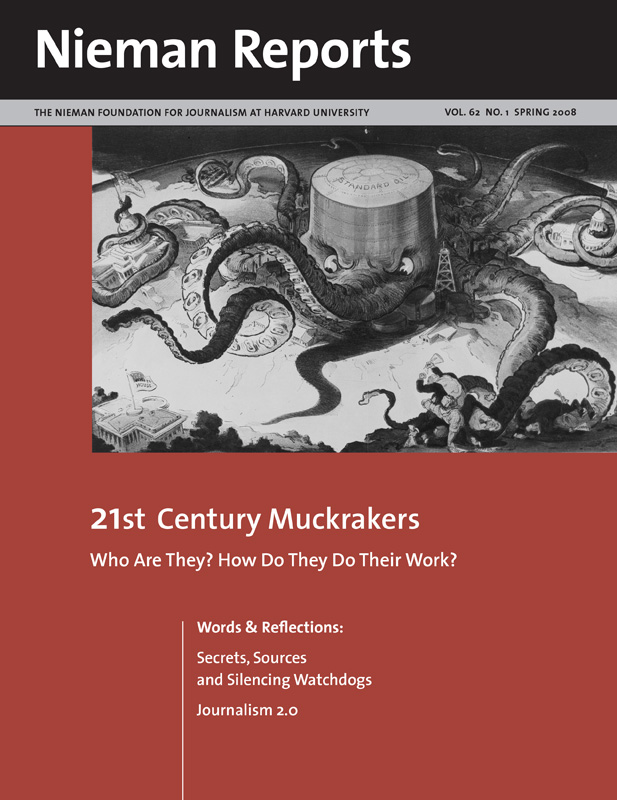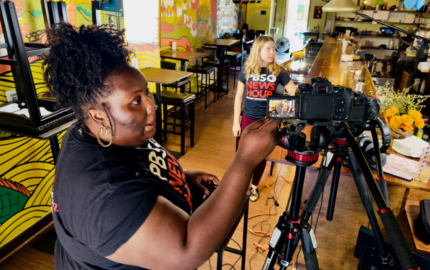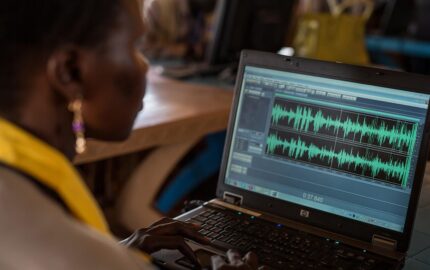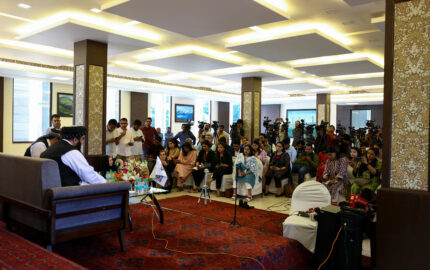The only thing I have wanted to do in my life—and the only thing I have done somewhat well—is telling stories …. For me, stories are like toys, and making them up is, one way or another, like a game. I believe that if a child were put in front of a group of toys with different characteristics, this child would start by playing with everything but at the end would stick to only one of those toys. This one toy would be the expression of the kid’s skills and vocation. If conditions were given for this talent to be developed throughout a lifetime, we would be on the verge of discovering one of the secrets for happiness and longevity. —Gabriel García Márquez
RELATED WEB LINK
“How to Write for the Web” by Guillermo Franco was published in December 2008 by the Knight Center for Journalism in the Americas at The University of Texas.
This Spanish-language book about journalism and the Web, available free as a pdf download, includes contributions from reporters and editors throughout Latin America, some of whom have launched a Facebook discussion group of the same name.Gabriel García Márquez, winner of the Nobel Prize for Literature, was not referring to the Internet revolution when he said these words at a film scriptwriting workshop in June 2004. Read today with the intersection of journalism and the Web in mind, they speak to challenges posed (its successes and failures) and to the essence of what takes place on it—storytelling. In its relatively brief history, the Internet has dislocated the economic foundations of traditional media but has also created for society, in general, and journalists, in particular, new possibilities for how their stories can be told. It has broken the one-way communication paradigm in which “we talk, you listen,” and in doing so has required that we, as journalists, develop new storytelling skills.
Journalists are discovering that in the digital age there is life for stories that go well beyond print. In fact, journalism’s survival depends on creating multiple lives for all of our stories. A slideshow, by itself, can tell a story, but a slideshow with audio can tell a different one. Audio alone can tell a story, or it can be used to complement another medium. Animated graphics can tell the story without other text, or video can become the storytelling medium.
All of these elements—audio, video, text and photos—organized in various ways give those who seek out a story a lot of options, such as choosing their entry point and how they want to take in the information they find. Even databases can be used creatively to tell stories by allowing users to customize their use. Content manipulated by the user can also tell a story in ways unknown to its original creator.
It has become commonplace to say that in the digital age anyone can be a journalist, or anyone can be an editor. A $10 million printing press is no longer needed to distribute content, and now more of this content is being produced outside the traditional media. These circumstances ably demonstrate that it is the technological environment, and not the media, that is redefining journalists’ profiles and skills, as well as those of whomever wants to generate content for the Web.
What skills do content creators or storytellers need to survive in the digital age? In 2005, as part of a master’s thesis at the Medill School of Journalism, C. Max Magee did some research to find out what skills were necessary to work in digital newsrooms. He came up with a total of 35, including transforming content into HTML, using Flash, learning how to write for the Internet, doing audio and video editing, managing online communities, performing metrics analyses, and coming up with alternative ways of telling stories.
Journalists should not be intimidated by either the terminology or the challenge posed by the new technology. More important than the ability to understand the new media is the attitude one brings to doing it. Like Márquez said about how children learn to play with their new toys, journalists will discover their own vocation and acquire skills as they experiment with the new media, and it is certain that they will pick up more than one “toy.” And as García Márquez himself puts it, to develop this talent, several conditions need to be in place.
Journalism 2.0
A great start is the book “Journalism 2.0: How to Survive and Thrive,” a digital literacy guide for the information age, by Mark Briggs. It can guide news organizations in setting up newsroom training as a way of transforming themselves from “newspaper manufacturers” to places where content is generated in many different media. Journalists who aren’t in newsrooms can be led step-by-step through the book, and journalism programs at universities can use the book to help reorient their curricula.
A Spanish version of Journalism 2.0 was made possible by the Knight Center for Journalism in the Americas at the University of Texas at Austin. Having this translation available will surely contribute to closing the digital gap between journalism in the developed world and in the developing countries in Latin and South America. This is an important step in closing the language gap, which has prevented Spanish-speaking journalists from accessing invaluable knowledge about their profession that is available in English.
Digital journalism, as practiced in the United States, is not all that different from how it’s done in Latin America. What our journalists need to develop their abilities in the new media is also quite similar. The difference is that U.S. journalists—and those in some other countries—are simply at a more advanced stage of the same process. In fact, I can think of few other activities other than digital journalism in which the word “globalization” carries so much meaning because of the global reach of the Internet. It is true that in some parts of the world a lesser percentage of the population is able to get onto the Internet, but the accelerated pace of growth in cell phone penetration in recent years gives us a good measure by which to foretell what will happen with the Internet.
According to research done in 2007 about digital journalism and newspaper Web sites in Latin America published by the Poynter Institute (of which I am a coauthor), 74 percent of the major newspapers are planning to integrate the online and print newsrooms “in the short, medium or long runs” to meet the demands of digital media. This strategy will allow them to expand their digital operation. Right now, many of them are extremely dependent on print content, distributed once every 24 hours, and on small journalists groups for their operation. And they are generating neither original products nor other kinds of reporting (audio, video, graphic-driven). This demonstrates how what is now the priority in almost every newspaper in the world (such as media convergence) will become part of our agenda.
This research echoes findings from research done in 2004 that found a great need for training journalists in the use of media other than print so they can produce multimedia content. Journalists in Latin American know that these changes must come to our newsrooms.
Briggs’s book opens the door to bring journalists into this new media environment. With it, becoming a digital journalist is literally in your hands. What will determine how successful you are will be the passion you invest in “going for it,” a passion that Márquez articulated at this same workshop. “The day I realized that the only thing I really liked was telling stories,” he said, “I dedicated myself to doing all that was necessary to fulfill that desire.”
ABOUT JOURNALISM 2.0
Journalism 2.0 was commissioned and published by J-Lab: the Institute for Interactive Journalism as a learning module on its Knight Citizen News Network (www.kcnn.org). The book is available as a free PDF download or a hard copy can be ordered for $12. It was funded by a grant from the Knight Foundation.
Guillermo Franco, a 2006 Nieman Fellow, is editor of eltiempo.com, a professor of digital journalism in post-graduate studies, and coauthor of two important pieces of research on digital journalism done in Latin America.



